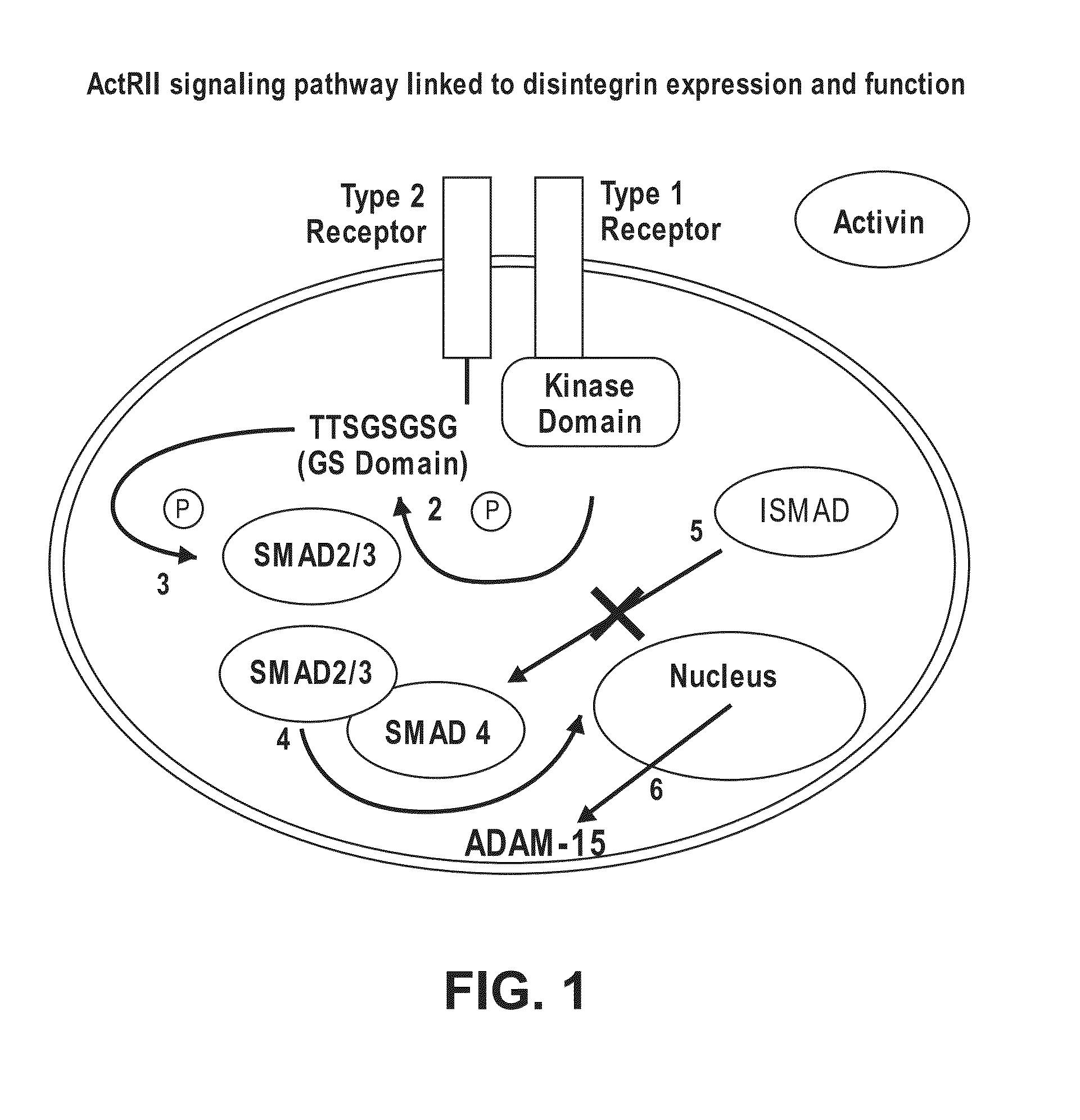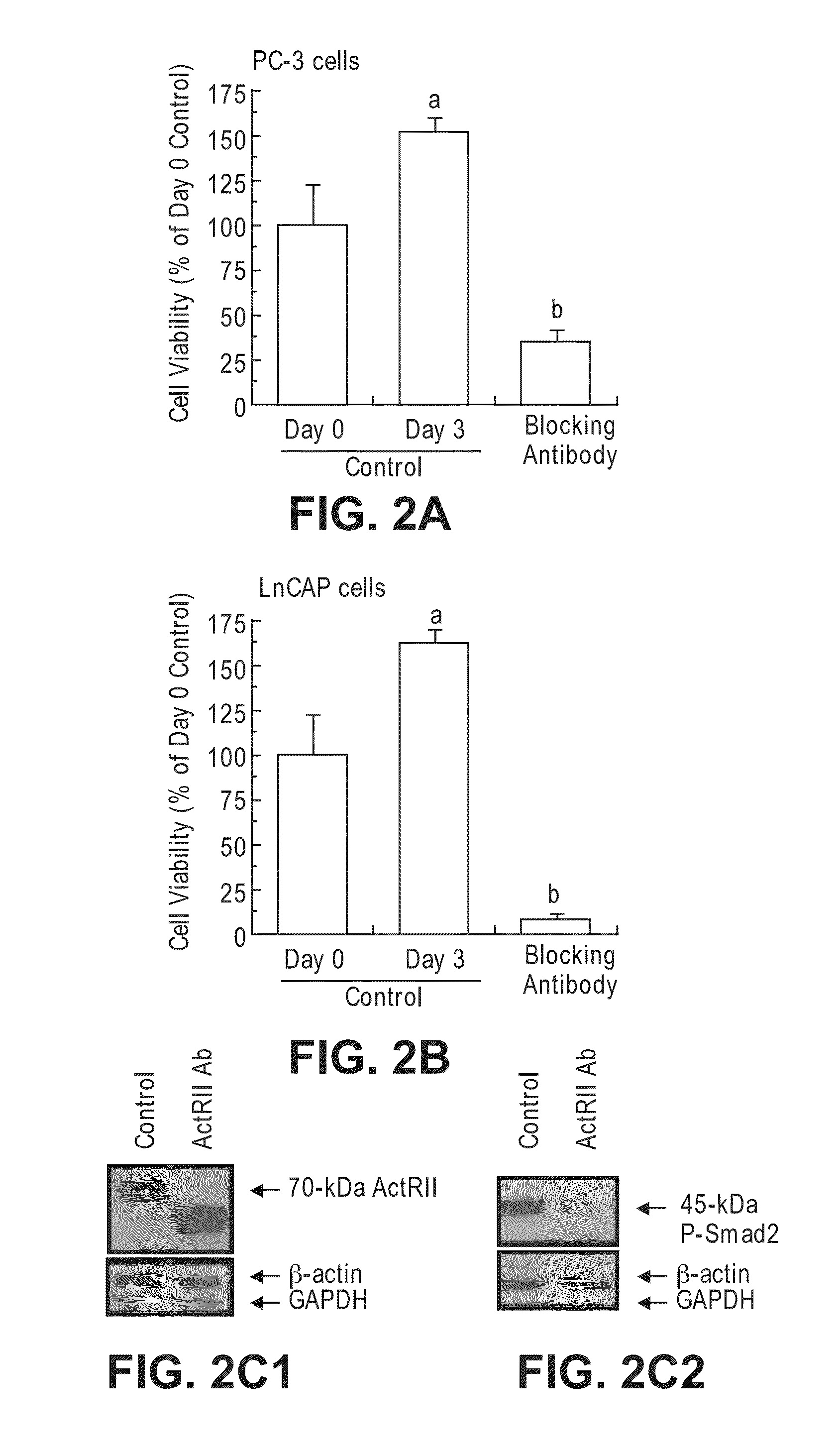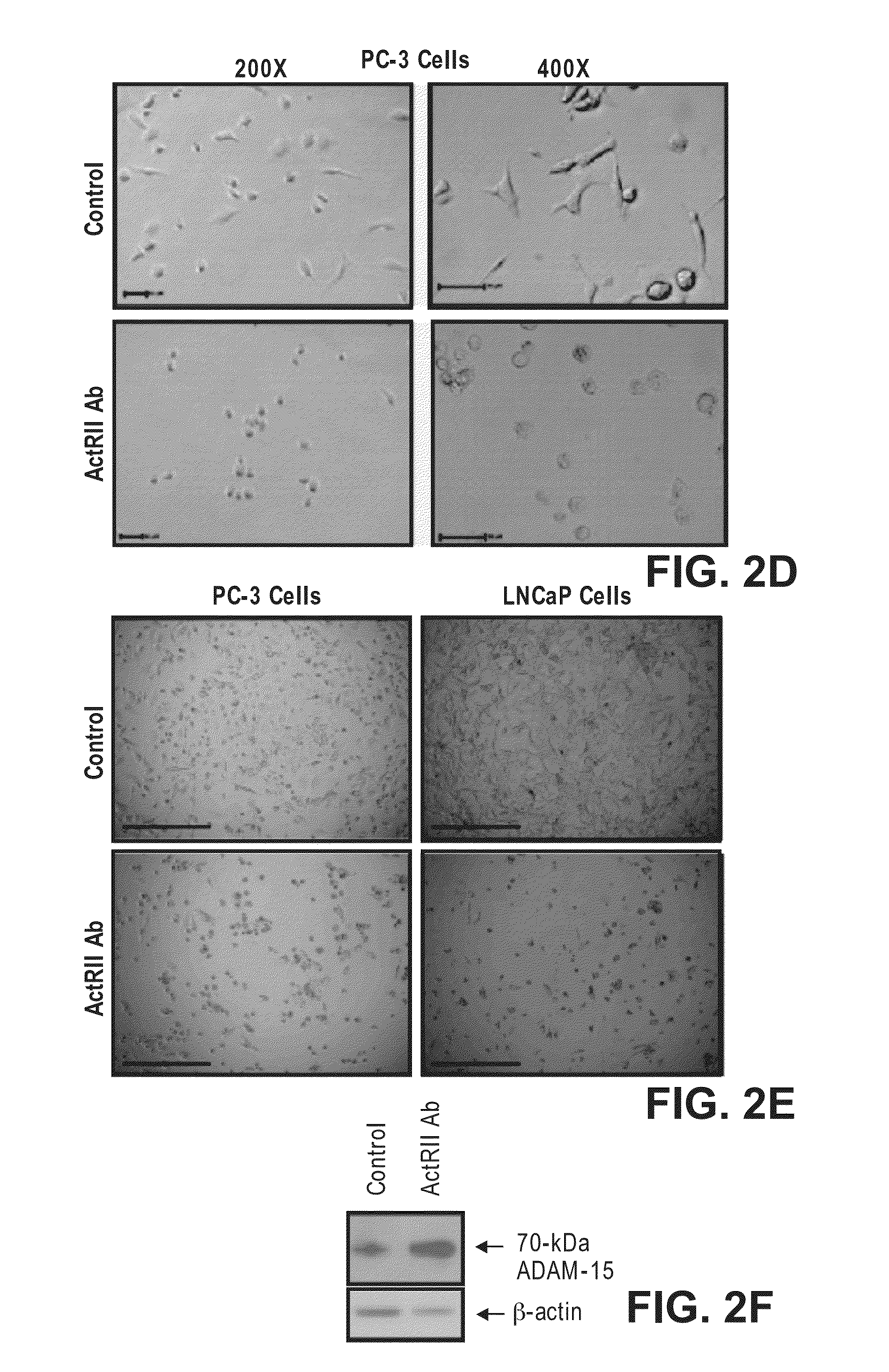Method for Identifying Agents that Inhibit Cell Migration, Promote Cell Adhesion and Prevent Metastasis
- Summary
- Abstract
- Description
- Claims
- Application Information
AI Technical Summary
Benefits of technology
Problems solved by technology
Method used
Image
Examples
example 1
ActRII Oligonucleotide-Induced Detachment of Cancer Cells in a Microwell Format for the High Throughput Screening of Small Molecules to Inhibit Cell Detachment
[0088]Prostate cancer cell lines (e.g. PC-3 cells) are cultured in 96-well opaque plates (luminescence compatible) at 37° C. in 100 μL of F-12 Nutrient Mixture (Ham; Gibco, Life Technologies, New York, N.Y.) supplemented with 1% penicillin-streptomycin (P / S; Life Technologies), 2 mM glutamine (Life Technologies), 0.4 mM sodium bicarbonate (Sigma, St. Louis, Mo.), and 5% fetal bovine serum (FBS, #26400-036; Gibco, Life Technologies). When cells reach 80% confluence (at least 24 h after plating to allow suitable attachment), cells are treated every day for 1-3 days with:[0089]1) treatment medium+0.4 μM ActRIIB sense-P oligonucleotide (SEQ ID NO 4); or[0090]2) treatment medium+0.4 μM ActRIIB antisense-P oligonucleotide (SEQ ID NO 3); or[0091]3) treatment medium+0.4 μM ActRIIB antisense-P oligonucleotide (SEQ ID NO 3)+small molecu...
example 2
Antisense Oligonucleotide Suppression of ActRII Along with ADAM-15 Suppression Prevents Cell Detachment
[0096]To test that cell detachment induced by suppressing ActRII signaling was mediated via the metalloprotease ADAM-15, we treated PC-3 prostatic cancer cells with antisense-P against ActRII and then treated these cells with antisense-P against ADAM-15. A significant decrease in cell attachment was detected after 3 days of treatment with antisense-P against ActRII, and this was reversed by treatment with antisense-P against ADAM-15 (p<0.01, n=5). As shown in FIG. 5, neither sense against ActRII nor together with sense against ADAM-15 altered cell attachment. These results illustrate that cell detachment induced by suppressing ActRII signaling is mediated via the metalloprotease ADAM-15, and further indicate that antisense-P against ADAM-15 as a chemical that can prevent prostate cancer cell detachment.
[0097]Androgen-insensitive PC3 cells derived from a grade IV human prostate aden...
example 3
Demonstration of Effectiveness of Antisense ActRIIB, siRNA, and Stealth siRNA in Comparison to Conventional ActRII Antisense for Inducing Cell Detachment
[0103]Cell Culture: PC-3 cells are androgen-insensitive cells derived from a grade 4 human prostate adenocarcinoma of epithelial origin (Kaighn, et al. 1978; Kaighn, et al. 1979). Cells were maintained at 37° C. in F-12 Nutrient Mixture (Ham; Gibco, Life Technologies, New York, N.Y.) supplemented with 1% penicillin-streptomycin with 2 mM glutamine (Gibco, Life Technologies, New York, N.Y.), 0.4 mM sodium bicarbonate (Sigma Chemical Co., St Louis, Mo.), and 10% fetal bovine serum (Atlanta Biologicals, Lawrenceville, Ga.). The cells were plated with 10% fetal bovine serum for 24 h prior to treatment for 72 h in serum-free medium containing respective oligonucleotides. For the crystal violet assay, cytology and cell counting, cells were cultured in sterile 48-well plates (Corning Inc. Corning, N.Y.).
[0104]For experiments using oligomer...
PUM
| Property | Measurement | Unit |
|---|---|---|
| Concentration | aaaaa | aaaaa |
| Adhesion strength | aaaaa | aaaaa |
| Cell adhesion | aaaaa | aaaaa |
Abstract
Description
Claims
Application Information
 Login to View More
Login to View More - R&D
- Intellectual Property
- Life Sciences
- Materials
- Tech Scout
- Unparalleled Data Quality
- Higher Quality Content
- 60% Fewer Hallucinations
Browse by: Latest US Patents, China's latest patents, Technical Efficacy Thesaurus, Application Domain, Technology Topic, Popular Technical Reports.
© 2025 PatSnap. All rights reserved.Legal|Privacy policy|Modern Slavery Act Transparency Statement|Sitemap|About US| Contact US: help@patsnap.com



